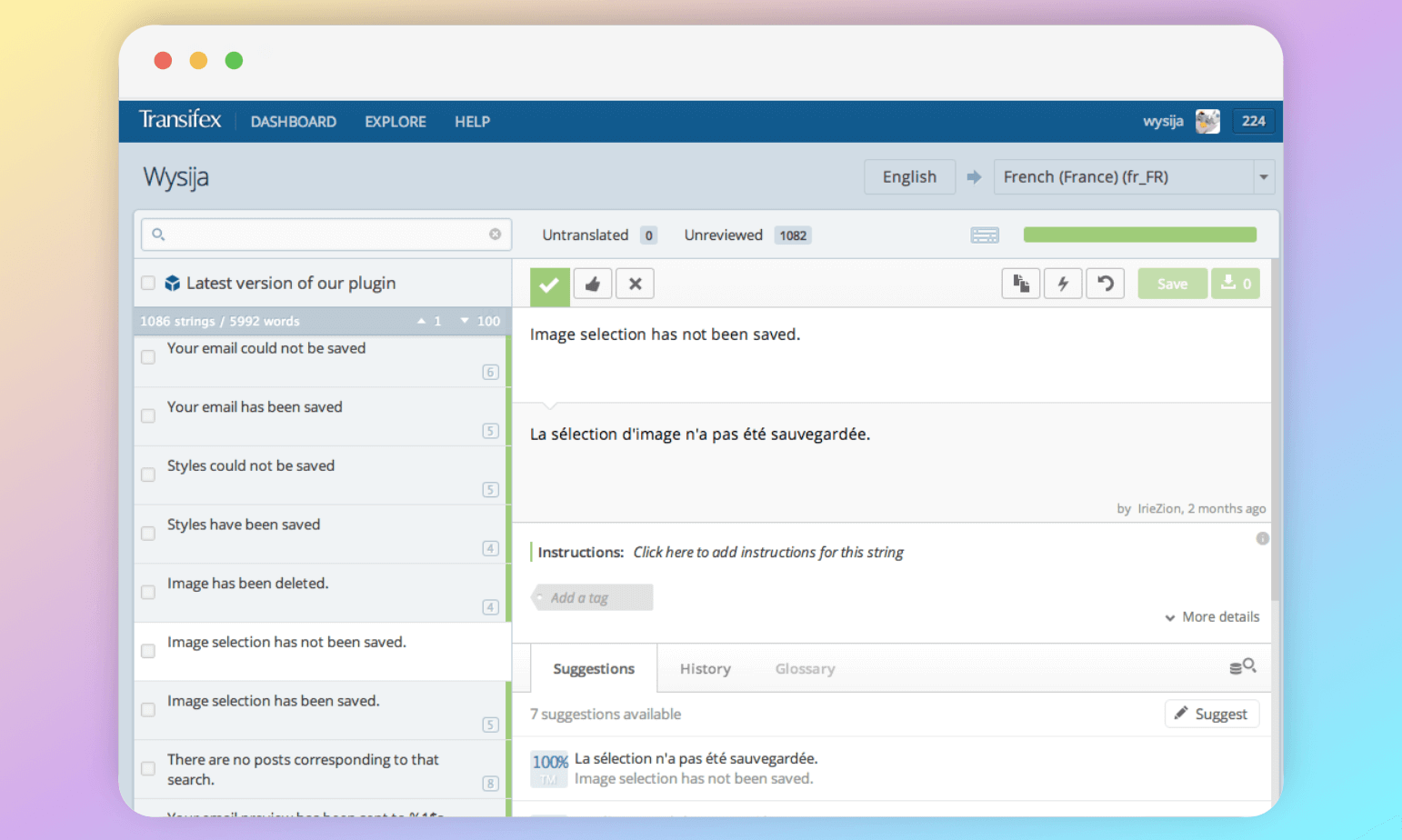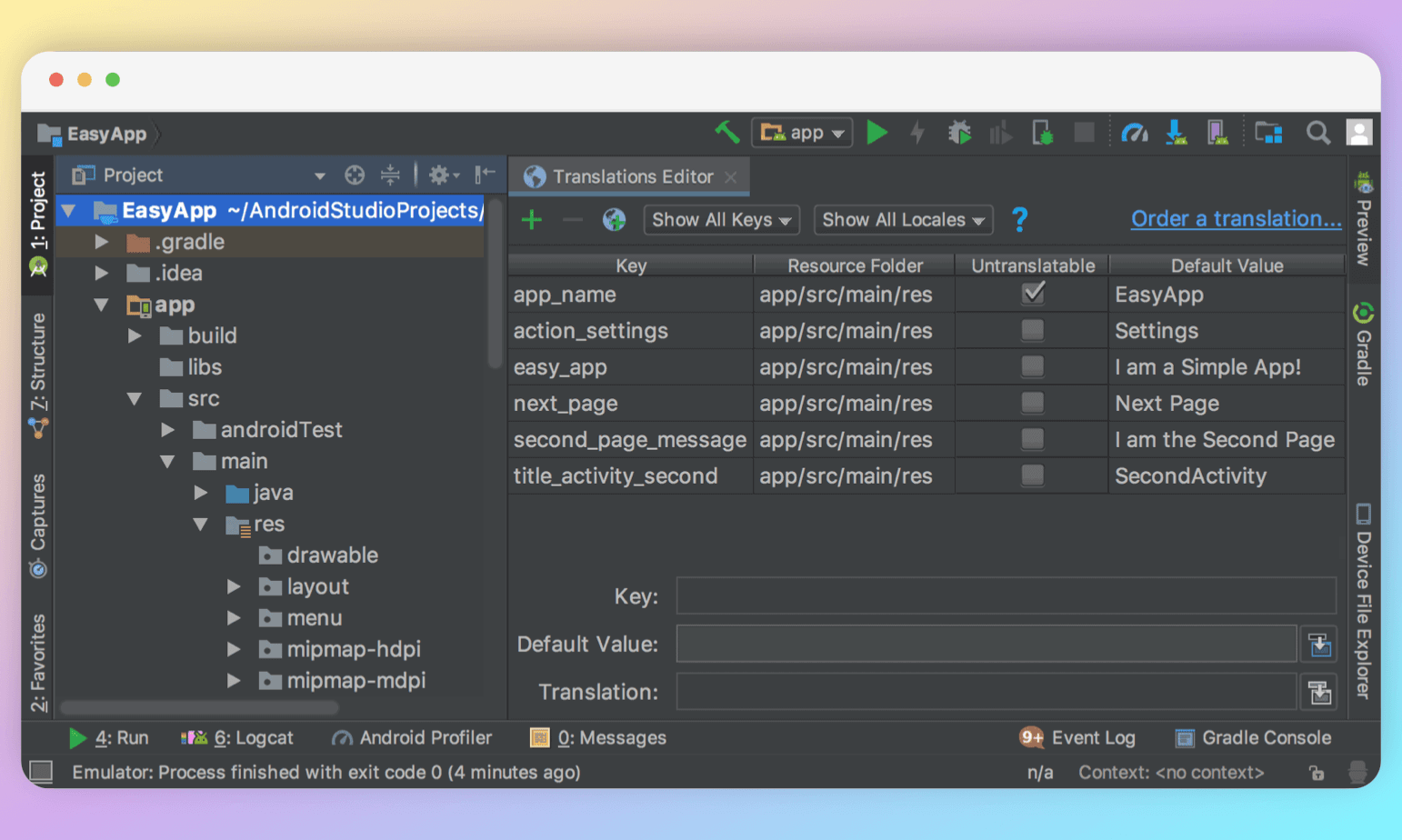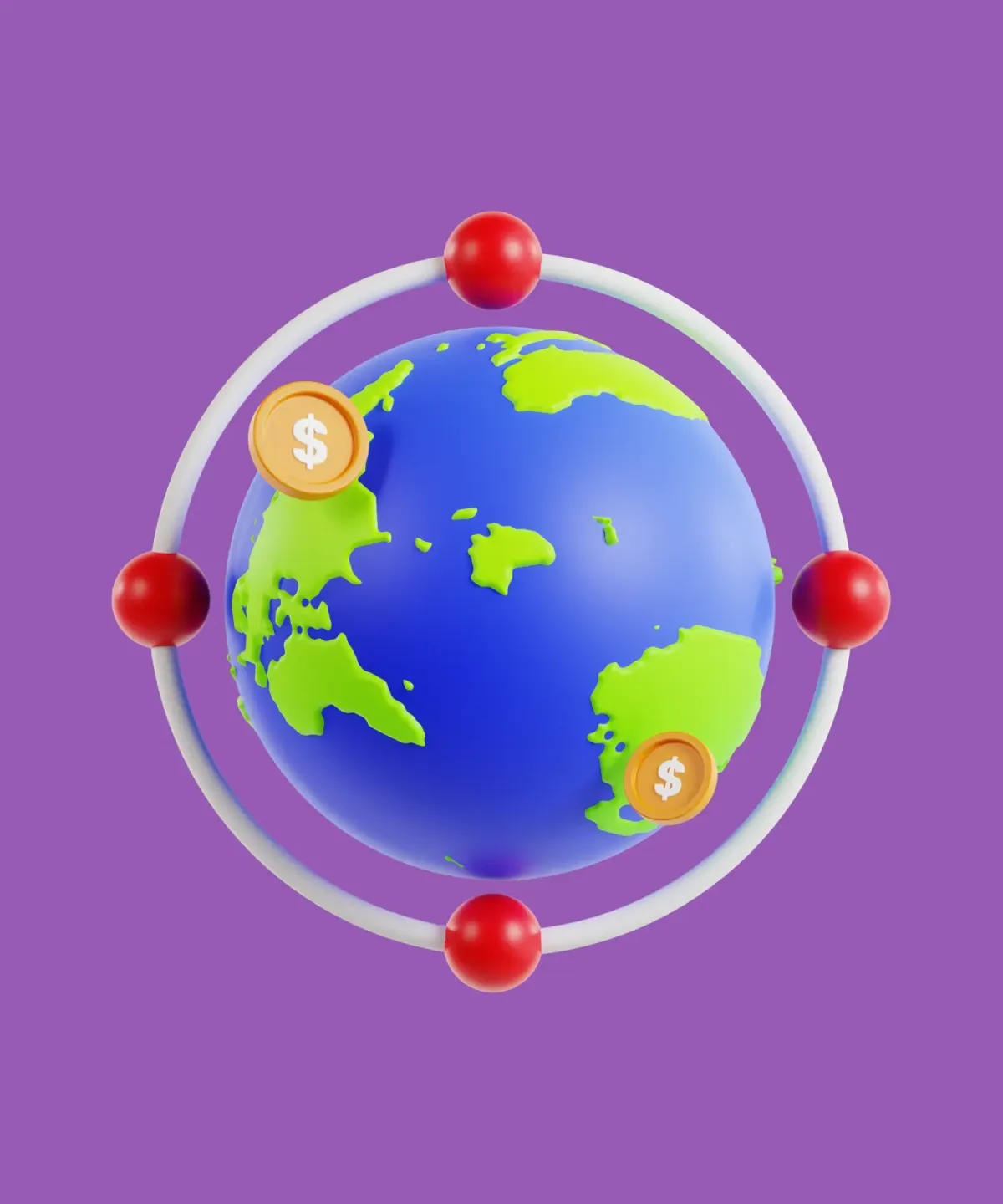In today's connected world, mobile app localization is a crucial strategy for developers and businesses seeking to broaden their global user base. This approach goes beyond simple translation, aiming to adapt app content to meet the cultural and linguistic nuances of various audiences, thereby enhancing the overall user experience.
App Localization: Overview
What is app localization?
App localization is the comprehensive process of adapting an app to suit different geographic or cultural markets. This involves more than just translating text; it's about customizing all aspects of the app, including the user interface, features, in-app content, graphics, and even app store descriptions, to align with the cultural nuances and expectations of the target audience.
The importance of localization is highlighted by user behavior trends, which show a strong preference for interacting with online content in one's own language. This tendency significantly influences purchasing habits, with a notable inclination towards products that offer information in the user's native language. Moreover, the value placed on language accessibility is often greater than the consideration of price, emphasizing the weight of linguistic adaptation in consumer choices.

Impact on business
Localizing an app can significantly impact a business's growth trajectory:
- Market Expansion: Accessing new user bases across different regions.
- User Engagement: Enhancing user experience tailored to local preferences.
- Increased Downloads: Boosting app visibility and downloads through localized app store listings.
- Revenue Growth: Expanding market reach translates directly into increased sales and revenue.
- Competitive Advantage: Standing out in markets where competitors may not have localized offerings.
For instance, Airbnb's localization efforts in China, which included customized signup flows using WeChat and Weibo, led to a staggering 700% growth in their Chinese traveler user base. This strategic move not only solidified their presence in the Chinese market but also significantly contributed to their global revenue.
Types of localization
There are varying degrees of app localization to consider:
- Minimum Viable Localization (MVL): This approach focuses on adapting only the essential features and content of an app, along with app store metadata. It's suitable for startups looking for a quick market entry and return on investment.
- Full App Localization: This is a more in-depth process where every element of the app is tailored to each target market, ensuring a fully immersive and localized user experience.
When to localize an app?
App localization should be considered once an app has gained traction in its initial market. The first expansion is often to countries with similar cultural norms. As the app grows, it can then extend to more diverse regions, adapting to various languages and cultural preferences.
Internationalization vs localization
While often used interchangeably, app internationalization and localization are distinct processes. Internationalization is the technical preparation of an app for potential future localization. It involves designing the app to support various languages and cultural formats from the outset. Localization, on the other hand, is the actual adaptation of the app to specific markets, refining details like language, cultural nuances, and local preferences.
In essence, internationalization sets the stage for localization, ensuring that when the time comes to adapt the app for different markets, the process is seamless and efficient. This foundational work allows for the smooth integration of different languages and cultural elements, avoiding potential layout issues or cultural missteps.
App Localization Process
Mobile app localization is the process of adapting an app to meet the language, cultural, and other requirements of a specific target market. This strategic move can significantly broaden an app's appeal and user base. It involves a comprehensive approach that extends beyond mere translation to encompass cultural adaptation and compliance with local legal and regulatory standards.
Language translation
The first step in localization is language translation, which requires more than a literal word-for-word conversion. It involves conveying the app’s content and intent in a way that feels natural and intuitive to the local user. Quality translation respects linguistic nuances, idiomatic expressions, and cultural references, ensuring the app’s language is both accessible and relatable to its new audience.
Obstacles in language translation include maintaining the context and meaning of the original text while adapting to the linguistic structures of the new language. For example, a direct translation could result in confusing or even offensive content if local expressions or double meanings are not considered.
Cultural adaptation
Cultural adaptation goes hand in hand with translation. This step requires an understanding of local customs, values, and taboos to ensure the app resonates with users on a cultural level. It could involve changing colors, graphics, or user interface elements to be culturally appropriate. Even the choice of images and icons must be carefully considered; for instance, an image that is considered harmless in one culture may be inappropriate or offensive in another.
A significant challenge here is ensuring that the app does not lose its brand identity or core message while undergoing cultural modifications. Balancing global brand consistency with local relevance is a delicate act that requires careful planning and sensitivity.
Legal and regulatory compliance
Adhering to legal and regulatory standards is crucial when localizing an app. Different countries have varying laws concerning digital content, privacy, data protection, and age restrictions. Ensuring compliance may involve modifying data handling processes, adapting privacy policies, or changing the way content is presented.
The hurdle in this domain often lies in the complexity and dynamic nature of legal frameworks. Laws can change rapidly, and staying abreast of these changes requires diligent monitoring and a willingness to adapt swiftly. Failure to comply can result in legal penalties and loss of user trust.
Common challenges
In addition to the core components, several overarching challenges may arise during the localization process:
- Technical Challenges: These can include issues like text expansion or contraction in different languages affecting the layout, or the right-to-left script adjustments required for languages like Arabic and Hebrew. It's also vital to ensure that the app supports local date formats, currencies, and units of measurement.
- Quality Assurance: Localization requires rigorous testing to ensure that all elements of the app function correctly in the new language and cultural context. This includes linguistic testing, functional testing, and cultural testing.
- Scalability: The app should be designed from the outset to handle multiple languages and regional adaptations easily. This foresight can prevent extensive rework if the app is localized for additional markets in the future.
- User Experience: The localized app must maintain the ease of use and intuitiveness of the original. This means that user feedback from the local market should be incorporated into the design to enhance the overall user experience.
- Continuous Updates: Apps are not static; they require regular updates and new content. Each update may require re-localization and re-testing to ensure that nothing is lost or broken in the translation.
- Resource Allocation: Localization can be resource-intensive, requiring translators, cultural consultants, legal advisors, and additional testing personnel. Balancing these resource needs with cost considerations is a critical part of the process.
In summary, mobile app localization is a multifaceted process that, when done effectively, can significantly increase an app’s global reach and user engagement. It's a strategic investment that demands attention to detail, cultural insight, and a strong understanding of the legal landscape. Overcoming the challenges of localization is a complex but rewarding endeavor that can transform a local app into a global success story.
Localization steps using Flutter
Let's delve into the localization steps using the example of a Flutter application. Flutter, with its convenient tools, offers a fast and effective localization process. To learn more about Flutter's capabilities in mobile app development, visit the page on Flutter for Mobile App Development.
Step 1: Project Configuration. Begin by setting up your Flutter project for internationalization, employing the intl package to enable support for multiple languages.
Step 2: Define Supported Locales. List the locales your app will support by specifying the language and country codes, which informs Flutter of the expected range of localizations.
Step 3: Extract Text Elements. Identify all the text elements within your app's code that will require translation, preparing them for the flutter localization workflow.
Step 4: Create Localization Files. Develop localization files for each language your app supports. These files will contain the translated strings and are key for the app's multilingual capabilities.
Step 5: Implement Locale Delegates. Set up locale delegates that act as instructions for Flutter on how to fetch and load the appropriate localized resources for the app.
Step 6: Apply Localized Content. Integrate the translated content into your app, ensuring that Flutter replaces any hardcoded text with the correct localized strings based on the user's settings.
Step 7: Adapt UI Layouts. Modify your UI layouts to accommodate the text length variations that come with different languages to keep your app user-friendly and visually appealing.
Step 8: Test Localization. Perform thorough testing for each language to confirm that the translations fit well within the app's context and the UI adapts as intended, ensuring the quality of your flutter internationalization efforts.
Step 9: Localize App Store Metadata. Localize the app's metadata, including descriptions and screenshots for the app stores, to better appeal to users in different regions.
Step 10: Maintain Localizations. Lastly, maintain a system for updating localizations regularly to keep up with changes and additions in the app's content.
Flutter's design simplifies the localization process, enabling the development of multi-lingual applications with relative ease. The integration of localization capabilities is straightforward, illustrating Flutter's commitment to providing a developer-friendly platform for global app deployment.
Best Practices for Mobile App Localization
- Prioritize locale-specific adaptation
When localizing your app, consider the locale (which combines language and regional settings) rather than language alone. For instance, English varies between the US (en-US) and the UK (en-GB), affecting spellings and cultural references. Utilize the 4-letter ISO codes to differentiate accurately. - Contextualize for linguistic precision
Provide translators with context for each segment of text. For example, the wordcheckcould mean verifying information or a bill in a restaurant, depending on the context. Clear guidance can ensure the correct translation is applied. - Maintain brand consistency with a glossary
Develop a glossary that includes key brand terms and phrases to ensure consistency across all localized versions of your app. This glossary will guide translators and help maintain your brand's voice. For instance, a tech brand might keep the termcloud storageconsistent across all languages. - Dynamic currency and date formatting
Avoid hardcoding formats for currency, dates, and times. Instead, use localization functions that automatically adapt these elements to the user's locale. For example, while the US usesMM/DD/YYYY, much of Europe usesDD/MM/YYYY. - Account for pluralization rules
Different languages have different rules for plurals. Ensure your app can handle these variations. For example, Polish has multiple plural forms, while Japanese generally does not differentiate between singular and plural. - Optimize through A/B testing
Conduct A/B testing for different localized versions to see which elements resonate best with the audience. This could involve testing variations of a call-to-action button to determine which wording increases user engagement in a specific locale. - Leverage ASO for global reach
App Store Optimization (ASO) is crucial for discoverability. Localize your app's title, keywords, description, and screenshots to align with cultural norms and search behaviors in each target market. For instance, a fitness app might focus onwellnessin a market where that concept is trending.
By implementing these practices, you can enhance user experience, increase adoption rates, and ensure that your app not only speaks multiple languages but also engages with cultural nuances effectively.
App Localization Services
In navigating the global market of mobile app localization, the strategic selection of tools and professional services is crucial for effectively engaging international users.
Automated Localization Platforms like Lokalise provide a robust solution for swift translation and cultural adaptation, with AI-powered technology and real-time translation capabilities ideal for rapid deployment.

Translation Management Systems (TMS) such as Transifex and Crowdin offer centralized control, perfect for projects that require collaborative translation and consistent updates across multiple languages.

For a more integrated approach, IDE Plugins like Xcode and Android Studio's Translations Editor allow developers to manage localization directly within their development workflow, suitable for smaller apps or those in the early stages of development.

While these tools enhance efficiency and automation, the human expertise of professional translation services cannot be overlooked. Firms like Lionbridge and RWS deliver high-quality translations with a strong emphasis on cultural relevance and brand integrity, essential for enterprises where accuracy is non-negotiable.
In summary, combining advanced localization technology with the expertise of professional translators can significantly improve your app's user experience and cultural connection, ensuring a successful localization strategy that broadens your app's international appeal and user engagement.
App Localization Examples
Google Maps
Google Maps stands out as a paragon of localization, offering its services in over 40 languages and 200 countries. It's not just about translating road names; Google Maps integrates local landmarks, public transportation, and traffic rules tailored to each region. In Japan, for example, the app meticulously details multi-level roads, a common feature in the country.
The app also connects users with local services, like making restaurant reservations or hailing cabs, directly through its interface. With App Store Optimization (ASO), Google Maps showcases culturally relevant landmarks and customs in its metadata and screenshots, ensuring a familiar touchpoint for users worldwide.
Airbnb
Airbnb's reach extends to 220 countries, available in over 62 languages, and it's not just the language that's personalized. The platform respects local customs, regulations, and even architectural styles, offering a truly localized browsing and booking experience.
Airbnb goes beyond by translating user-generated content such as listings and reviews, providing localized guides that act like personal tour guides. This level of detail in their localization strategy has helped Airbnb become a household name in the global hospitality industry.
Spotify
Spotify's availability in 61 languages across 79 countries is impressive, but it's their localized content that truly resonates with users. The streaming giant curates playlists reflecting local music tastes and trends, making each user feel seen and understood, no matter where they are.
Netflix
Netflix is renowned for its localized content, not just in app interfaces and subtitles but also in original content creation. Shows like "Sacred Games" in India are imbued with local culture, language, and references, earning high ratings and proving Netflix's commitment to creating content with regional appeal. This strategy has positioned Netflix as a content creator that truly understands and respects its diverse global audience.
Conclusion
Mobile app localization extends beyond translation, adapting apps to cultural nuances and boosting user engagement worldwide. The localization process includes careful language translation, cultural adaptation, and legal compliance to resonate with users and meet regional standards.
Success stories like Google Maps, Airbnb, Spotify, and Netflix demonstrate the power of localization. Google Maps customizes navigation details per region, Airbnb personalizes travel experiences, Spotify curates local music playlists, and Netflix creates region-specific content, all contributing to their global success.
For businesses looking to create a localized app, partnering with an experienced app development agency can be a game-changer. An agency can provide the expertise needed to ensure that an app resonates with users across different cultures and languages, making the app not just multilingual but also culturally competent and engaging.











